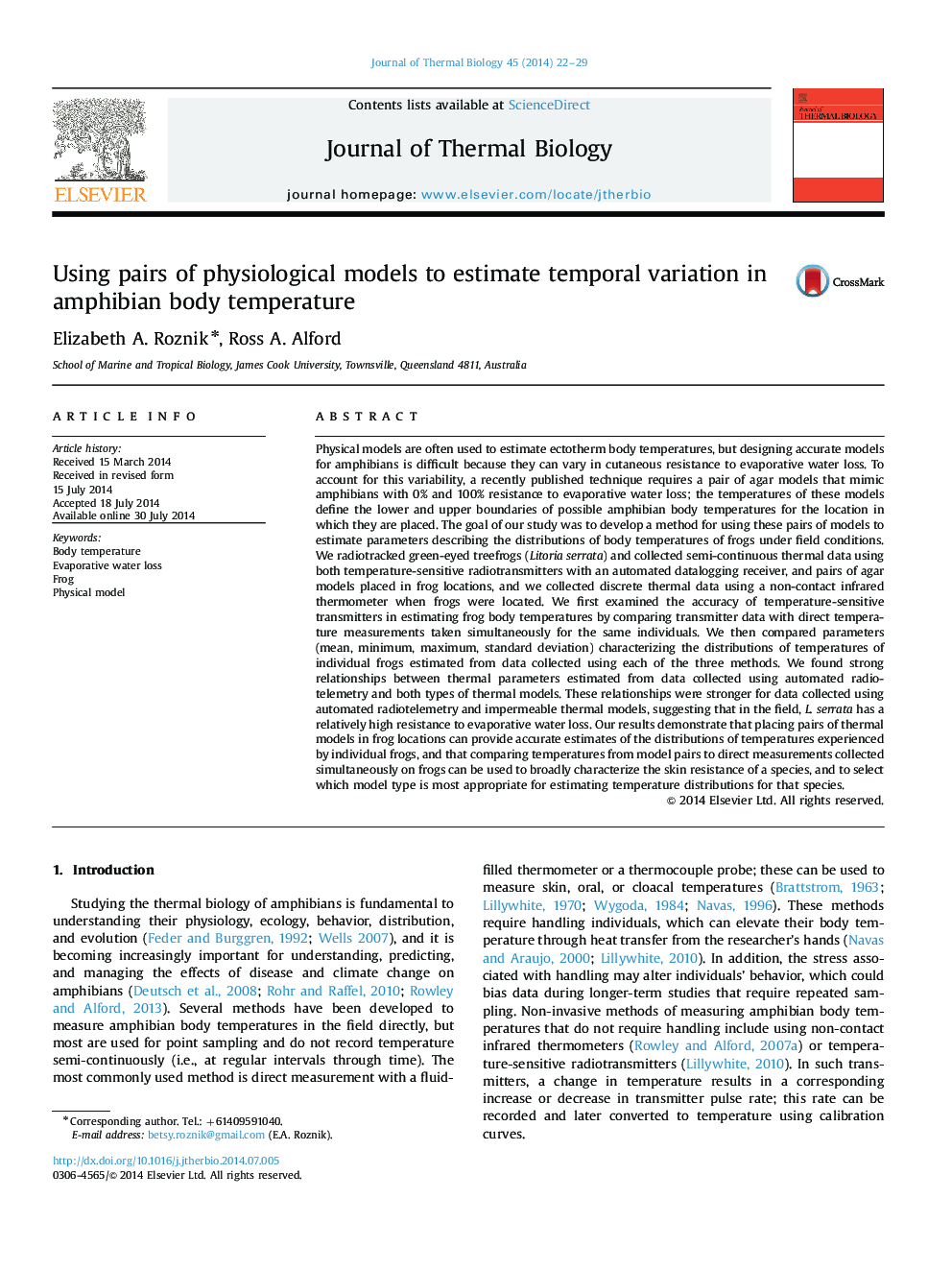| کد مقاله | کد نشریه | سال انتشار | مقاله انگلیسی | نسخه تمام متن |
|---|---|---|---|---|
| 2842875 | 1571100 | 2014 | 8 صفحه PDF | دانلود رایگان |
• We developed a method for estimating amphibian body temperatures.
• We used pairs of agar models with different rates of evaporative water loss.
• Different model types were closely related to temperatures of different species.
• This method can be used to collect accurate thermal data on amphibians.
Physical models are often used to estimate ectotherm body temperatures, but designing accurate models for amphibians is difficult because they can vary in cutaneous resistance to evaporative water loss. To account for this variability, a recently published technique requires a pair of agar models that mimic amphibians with 0% and 100% resistance to evaporative water loss; the temperatures of these models define the lower and upper boundaries of possible amphibian body temperatures for the location in which they are placed. The goal of our study was to develop a method for using these pairs of models to estimate parameters describing the distributions of body temperatures of frogs under field conditions. We radiotracked green-eyed treefrogs (Litoria serrata) and collected semi-continuous thermal data using both temperature-sensitive radiotransmitters with an automated datalogging receiver, and pairs of agar models placed in frog locations, and we collected discrete thermal data using a non-contact infrared thermometer when frogs were located. We first examined the accuracy of temperature-sensitive transmitters in estimating frog body temperatures by comparing transmitter data with direct temperature measurements taken simultaneously for the same individuals. We then compared parameters (mean, minimum, maximum, standard deviation) characterizing the distributions of temperatures of individual frogs estimated from data collected using each of the three methods. We found strong relationships between thermal parameters estimated from data collected using automated radiotelemetry and both types of thermal models. These relationships were stronger for data collected using automated radiotelemetry and impermeable thermal models, suggesting that in the field, L. serrata has a relatively high resistance to evaporative water loss. Our results demonstrate that placing pairs of thermal models in frog locations can provide accurate estimates of the distributions of temperatures experienced by individual frogs, and that comparing temperatures from model pairs to direct measurements collected simultaneously on frogs can be used to broadly characterize the skin resistance of a species, and to select which model type is most appropriate for estimating temperature distributions for that species.
Journal: Journal of Thermal Biology - Volume 45, October 2014, Pages 22–29
